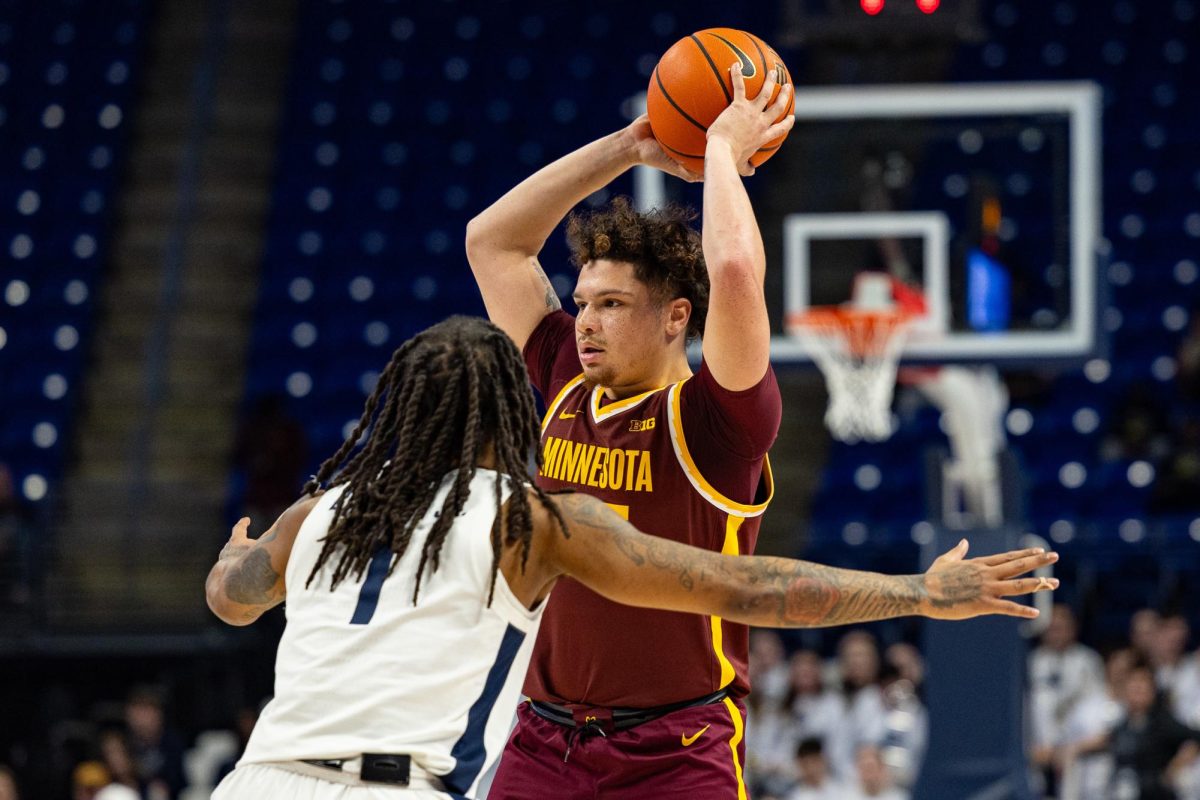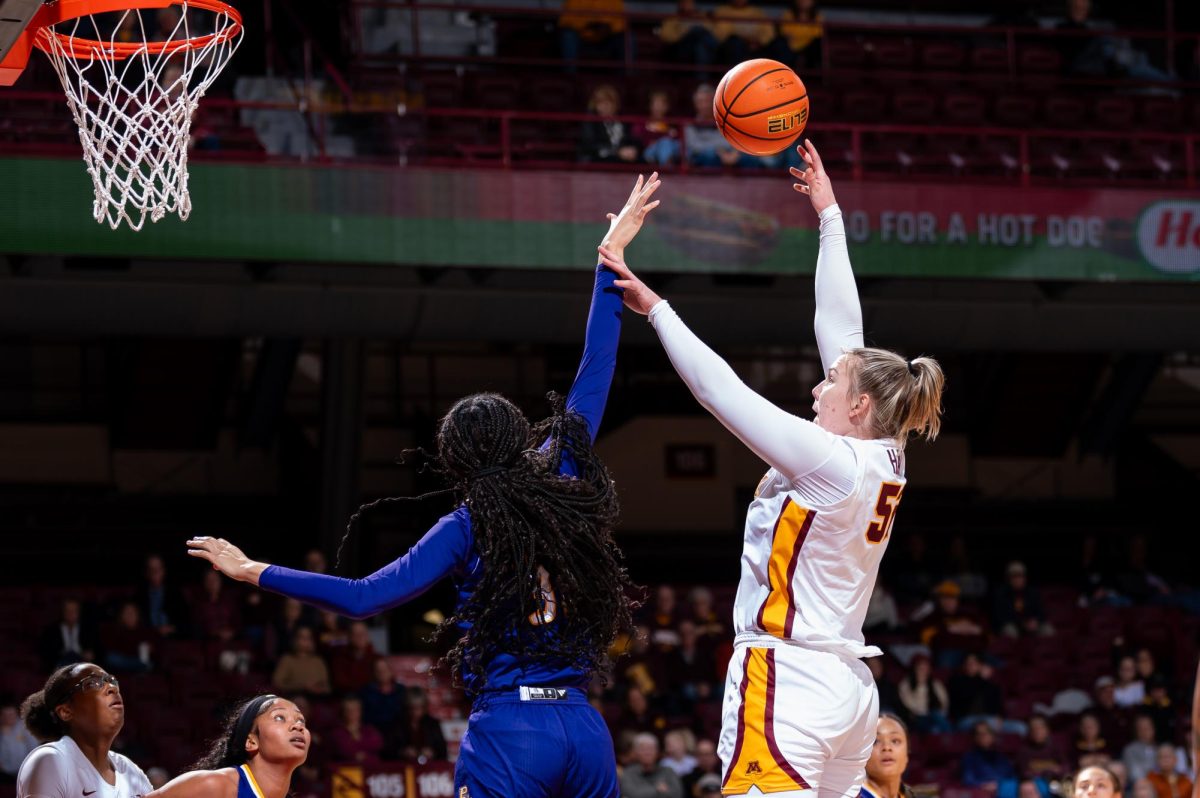BLOOMINGTON, Ind. – The most glaring offense in Minnesota’s football team’s 30-21 loss to Indiana wasn’t the two third-down pass-interference penalties that kept the Hoosiers’ game-clinching touchdown drive alive. Nor was it the fact that the Gophers gave up 238 yards rushing to a ground game ranked 10th in the Big Ten.
No. For once, the blame for Minnesota’s loss – which officially eliminates the Gophers from chasing a Rose Bowl dream that now seems eons old – must be hung on an offense that gained exactly six yards in the fourth quarter against a Hoosiers defense ranked 110th out of 117 teams in the nation.
Charged with a fourth-quarter comeback to salvage any realistic shot at a New Year’s Day bowl game, Minnesota’s offense once again fell short after a forced dependence on the pass.
The Gophers gained 351 yards – their third-lowest total of the season – and became the first Big Ten team to score fewer than 30 points against Indiana.
“Every time we were ready to knock on the door and make a move, something happened,” Minnesota coach Glen Mason said.
The biggest something wasn’t when the Gophers were knocking on the door. It came when Minnesota could have slammed it.
Up 14-0 in the first quarter and beginning a drive at their own 36-yard line after an Indiana punt, the Gophers were soon in a third-and-20 situation thanks to a holding penalty. Minnesota lined up with three wideouts to quarterback Bryan Cupito’s right, but Cupito stared down slot receiver Ernie Wheelwright the entire time, allowing Hoosiers safety Will Lumpkin to jump Wheelwright’s hitch route.
And when Cupito threw short and behind Wheelwright, Lumpkin snatched the pass and went 42 yards for an Indiana touchdown that completely changed the course of the game.
“It was probably the play to get the momentum changed,” Indiana coach Gerry DiNardo said. “I wouldn’t say we were flat, but we weren’t energized until that play.”
Cupito finished 11-for-30 passing, marking the fifth straight game his completion percentage has been less than 50 percent.
Cupito didn’t bother to speak to the media and let reporters know what he saw on the interception after the game, and Mason said he couldn’t see what happened from his vantage point on the sidelines.
But running back Laurence Maroney wouldn’t call the interception the game’s biggest play.
“We were still up (14-6) at the time,” he said. “We needed to capitalize after that, which we didn’t.”
Minnesota was outscored 30-7 in the game’s final three quarters, rushing for just 109 yards in that span. And just like their 51-17 loss to Michigan State, the Gophers were stuck riding a passing game ill-suited to coming from behind.
Instead of having the option to run on third-and-short, where its offense works best, Minnesota was forced into a collection of desperate passes on third-and-long.
Six of Minnesota’s nine third-down attempts in the second half were from six yards or longer. The Gophers converted just two of those, also losing two yards on a third-and-one in the fourth quarter and finishing the game 6-for-16 on third down.
And things don’t get any easier for an offense that has struggled on the road the last three games. Next up is Wisconsin, ranked in the nation’s top 10 in rushing, passing and total defense.
Wisconsin also leads the country in scoring defense, giving up just 8.5 points per game.
If the Gophers couldn’t move the ball on Indiana, it stands to reason they’ll have a tough time doing much against the Badgers.
“If we don’t play any better than we played today,” Mason said, “We will really be embarrassed.”
After an 18-foot fourth quarter, it couldn’t get much worse.







